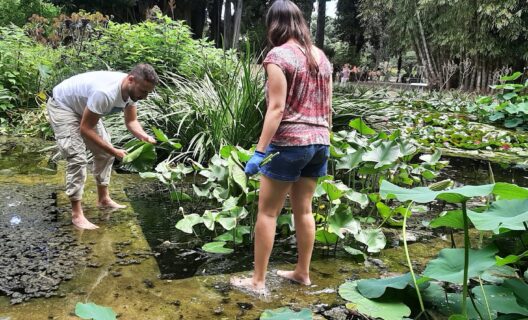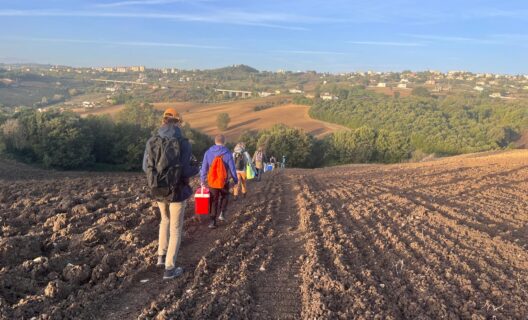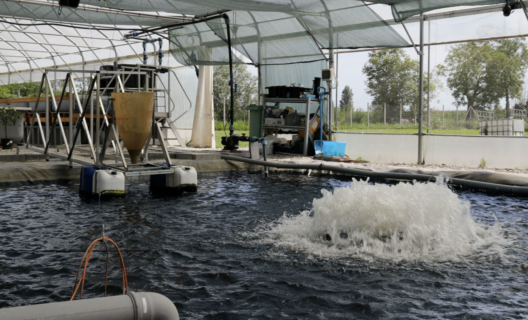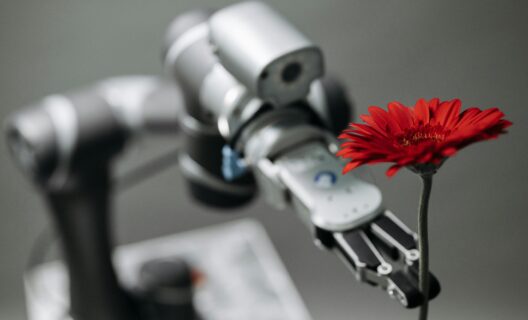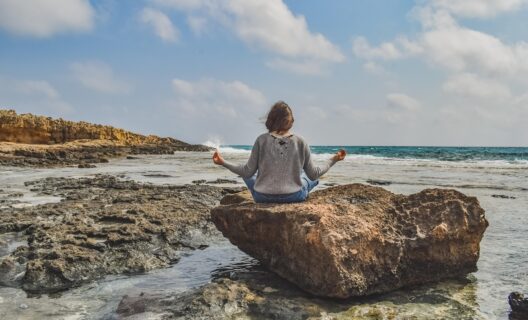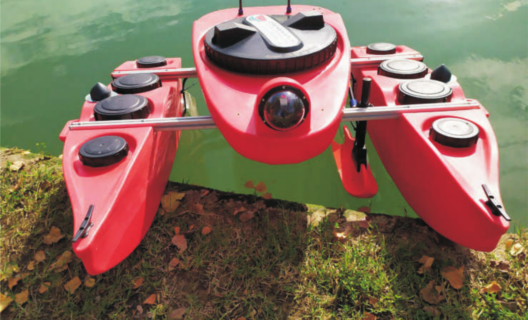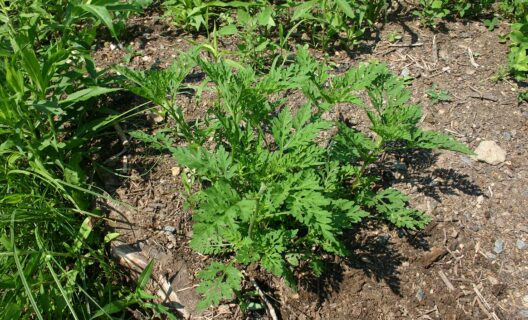

Reading time
0 min
Biosolutions, circular economy and regulatory challenges for a sustainable future
At a time in history when sustainability is no longer an option but a necessity, the transfer of scientific research to the market is one of the great challenges of our time. It is in this context that Liberinnova, the white paper writing project designed to modernize European legislation on botanicals, was born. The project, led by PlantaRei together with an international team of experts, has a specific goal: to make the pathway that brings biosolutions from trials to consumers faster, more transparent and more effective. We talked about this with Elena Sgaravatti, CEO of PlantaRei and an influential voice in the biotech world. From the central role of plants to the need for proper scientific communication, passing through the deep meaning of “common good,” a strong and concrete vision emerges: innovation can no longer wait.

""
One name, one mission
Doctor, today we are talking about PlantaRei, an interesting company right from its name, which evokes the ancient invitation to embrace change as a fundamental feature of existence.
“That’s right: the name of our reality is inspired by the Heraclitean principle of “everything flows.” It is a plant biotechnology company: we are in the business of exploiting all available resources from a circular economy perspective, because a number of indicators, such as planetary limits, require us to move in this direction. We want to escape the vicious circle of the linear economy that is made of “take, use and throw away.” And so we develop biosolutions.”
"Biosolutions offer concrete answers to global challenges. "
Elena Sgaravatti
What does biosolutions mean to you?
“It means solutions inspired by nature, making use of microorganisms, bacteria, enzymes found in nature. Ryan Bethencourt, an American scientist and entrepreneur, once said, “Our world is based on biology. Once we begin to understand it, biology becomes technology.” I think he is profoundly right. Biosolutions offer concrete answers to global challenges. Acting on a microscopic scale, microbes and enzymes help us combat climate change, repair food systems, reduce pollution, improve health and nutrition, and make industrial processes more sustainable.”
""
The common good: a collaborative effort
We read several times on your website that PlantaRei has the common good in its mission. Can you frame this concept for us?
“Sure. We think that with a change of mindset, through the development of biosolutions and working in supply chains, it is possible to build a circular economy. The latter is completely different from the linear one: it is regenerative and collaborative, because it brings together many more people-businesses, the community, consumers, institutions. It requires commitment and shared vision. Let me give you an example: recovering fruit processing residues, or “waste” from the General Markets, or fruit that has perished in the fields because harvesting it no longer pays off, is laborious and to date uneconomic. But throwing it all away, as is often the case, instead of recovering it for new purposes and innovative uses, is a loss first and foremost for the farmer who has put time and effort into his harvest, but also for society as a whole. Resources are not infinite – and they belong to everyone. Natural capital belongs to the whole world, and its indiscriminate exploitation is simply unfair. Plants, which many still regard as inferior, are much more evolved and better organized living beings than animals. They have an evolutionary advantage of millions of years behind them, they know how to create energy from sunlight, they produce substances that even the best chemist in the world could not replicate, and they simply allow life to exist. When we can fully understand this we will finally look at plants with humility and due respect, and know how to learn from them, appreciating what they offer us. Using what they can give us through upcycling processes, such as through the use of enzymes to turn them into new products with high added value, means doing circular economy to protect natural capital.”

""
The Liberinnova Project
How do you collaborate with NBFC, and what does the Liberinnova project consist of?
“Liberinnova is a project that consists of writing a white paper (White Paper in English: official report on a particular topic to promote its strengths and characteristics, ed.) to be delivered to institutions to request the modernization of the botanicals legislation. I know this area of legislation quite well because in the past I registered-that is, received marketing authorization in Europe-the first three ingredients for nutraceuticals from cell cultures, and then another ingredient as a novel food. Today, new European legislation makes regulatory and regulatory pathways complex and expensive, which severely limits both innovation and environmental sustainability. In comparing myself with various academics participating in NBFC, I pointed out this critical issue-so the idea was born, with the support of other collaborators who are experts in the field, to write a white paper.”
""
What exactly does this white paper call for?
“The report starts with the idea that all the extraordinary research work NBFC is doing may not reach the market because there is a regulatory bias. It is our job to prepare the ground for the fruit of so much effort to come to fruition: doing innovation means taking research and turning it into a benefit to society. If it stays in a drawer, it is not innovation.”

""
A dialogue with Italian and European institutions
To whom is your white paper addressed?
“Both to European and Italian institutions, and in fact we are drafting it in both English and Italian. In addition to being CEO of PlantaRei, I am vice-president of Assobiotech, and within that context, as a representative of European Biosolutions Coalition, I am participating in a joint effort to impress upon the European Commission and the European Parliament the need to accelerate research access to the market. Biosolutions that in the U.S., Canada, China, Latin America, India, all over Asia take 2 to 3 years to make this transition, in Europe they take 5 to 10 years. In other words, under the current conditions the others pass us by.”
"With a change of mindset, through the development of biosolutions and working in supply chains, it is possible to build a circular economy."
Elena Sgaravatti
The importance of science communication
What importance do you place on communication and dissemination of your research? How do you give them back to the population?
“Science communication for us is a crucial issue, and one that will become increasingly important: science and research are progressing faster and faster, and those involved in communication have a responsibility to explain correctly and simply, using terms that aid in understanding. “Biosolution,” for example, is a concept that is immediately connoted as positive; “biotechnology” leaves one uncertain: yet bread, wine and beer are biotechnology, because they use ferments and yeasts. Last year’s EU development paper “Building the future with nature” says extraordinary things about the value of biotechnology in meeting societal challenges that need to be accurately communicated. Expressions like “Frankenstein’s strawberry” serve no one and are indeed harmful. The public has a right to know about research without being manipulated.”
""
Are you going in this direction with the white paper?
“Exactly, and we are doing this within a very precise framework, that of botanicals, that is, all those products generated from the plant world that can then be used as bioactives in drugs, supplements, or cosmetics. Within this framework there are concepts to clarify and myths to dispel, such as the one that “natural” means “beneficial,” while “synthetic” or “artificial” or “lab-produced” means “bad.” This is blatant nonsense: the most potent poisons are natural poisons-and all too often we read about poisonings from mushrooms or plants. If “synthetic,” then, means “made with chemistry” – well, it is good to remember that we ourselves are made of chemistry.”

""
The white paper team
How is the white paper organized?
“It starts with an introduction that takes a snapshot of the current regulatory framework, and then develops by offering recommendations and suggestions that will enable the research to reach the market.”
""
Who is collaborating on this writing?
“We draw on cross-sectoral expertise in drafting this document. PlantaRei is lead author; then we work together with EAS Strategy, a Brussels-based regulatory advisory agency, with lawyers who are experts on the Nagoya Protocol. This international agreement sets out how to share equitably the benefits arising from the use of genetic resources. Let me explain with an example: there are extraordinary plants in the Amazon. If I want to use them, I have to give fair economic compensation to the nation that hosts them or where there is a tradition of their use. Think about this: in Italy we have practically half the biodiversity of the entire European flora. Using our plants pays off, and from a regulatory point of view we need this to be facilitated. Additional collaborators involved are Antonino Santoro, well-known in the pharmaceutical and nutraceutical areas, and Valentina Veneroso, a respected expert on the Nagoya Protocol, which regulates the access to genetic resources and the fair sharing of benefits from their utilization. Furthermore, the document is also open to the involvement of the European Biosolutions Coalition, as well as any comments and suggestions from other sector associations.”
""
What is your hope, and what are your expectations? When will we know if the white paper has produced the results it was aiming for?
“We hope very soon. The current regulatory framework is a safeguard for the consumer, and safety is the priority, but we know it now: research is so fast that regulation has not kept pace. Now is the right time to realign.”
Protagonists of the interview

Elena
Sgaravatti
- CEO PlantaRei Biotech
- PlantaRei Biotech
- elenasgaravatti@plantareibiotech.it Copia indirizzo email
Listen to other voices
Discover other voices and new perspectives: biodiversity told by those who study it, protect it and make it known





